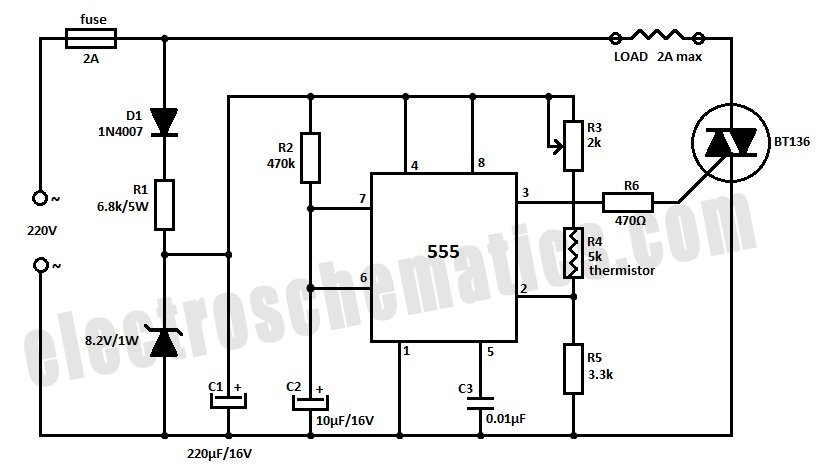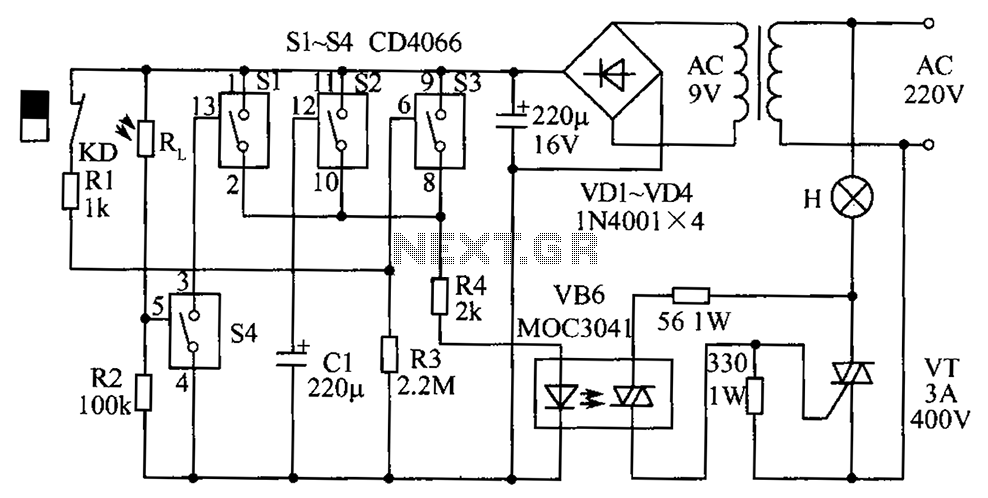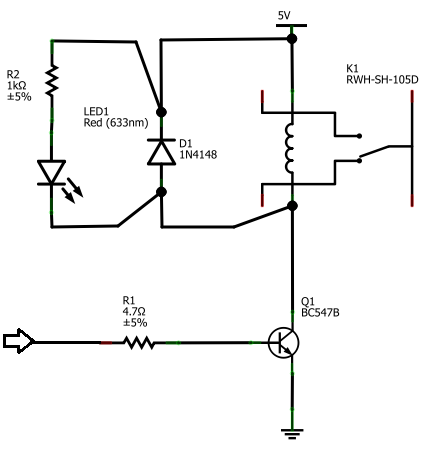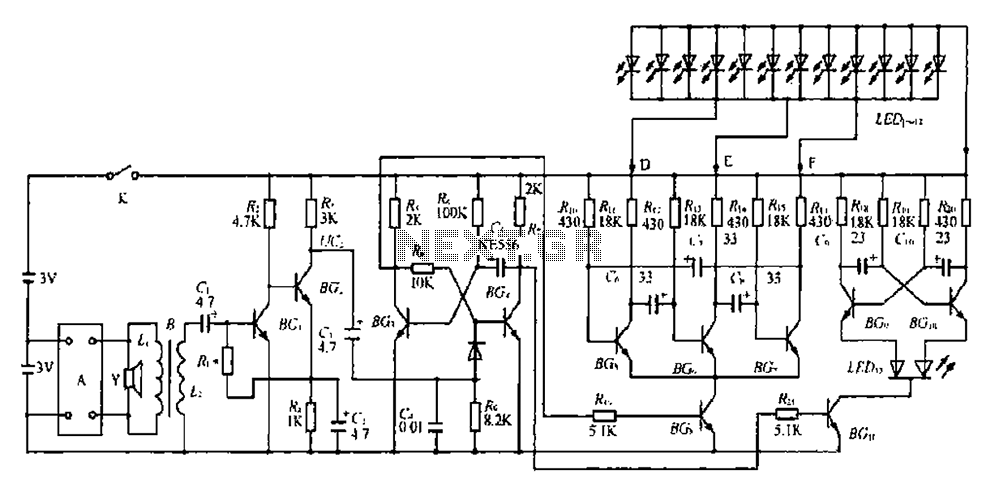
A three-phase motor phase automatic protection circuit
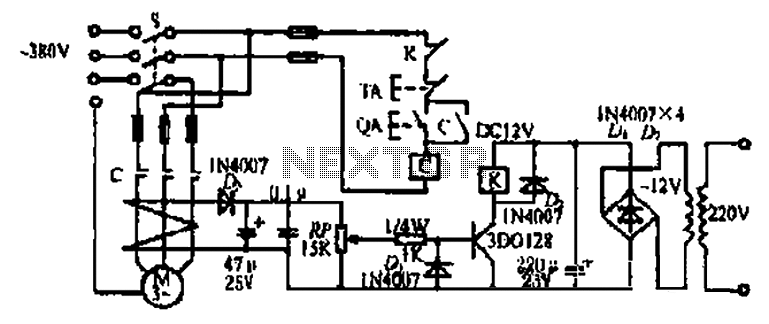
Connect a transformer to the motor phase line when the induced voltage is zero volts. In cases of serious imbalance in one, two, or three phases, the transformer’s induced voltage increases rapidly, which leads to an immediate rectification of the transistor base current. When the transistor enters saturated conduction, the relay K activates, causing the normally closed contact to open. As a result, the contactor coil is de-energized, leading to a power loss and stopping the motor from running. The operating time for this process is less than one second.
This circuit employs a transformer to monitor the voltage levels across the motor phase lines. When the induced voltage drops to zero, indicating a potential fault condition or imbalance in the power supply, the transformer triggers a series of actions to protect the motor. The rapid rise in induced voltage during an imbalance condition is detected and processed, resulting in the rectification of the base current of a transistor.
The transistor is configured to operate in a switching mode. Once the base current reaches a certain threshold due to the rectification process, the transistor enters saturation, allowing current to flow through the relay coil. Relay K is used to control the power supply to the motor by operating its normally closed contact. Under normal conditions, this contact allows current to flow to the contactor coil, keeping the motor operational.
However, when the relay is activated due to the transistor's saturation, the normally closed contact opens, interrupting the power supply to the contactor coil. This action effectively de-energizes the coil, resulting in the disconnection of power to the motor. The circuit is designed to respond quickly, with an operating time of less than one second, ensuring that the motor is promptly stopped in the event of a serious phase imbalance, thereby preventing potential damage to the motor or associated equipment.
Overall, this circuit serves as a protective measure for motors operating in environments where phase imbalances may occur, ensuring reliable operation and safety.Penetrate the motor phase line with a transformer when the induced voltage is ov. When one phase or two-phase or three-phase serious imbalance, transformer induced voltage rises rapidly, resulting in the transistor base current after rectified immediately transistor saturated conduction, the relay K was electric suction units, normally closed contact off point, the contactor coil is oFF, touch -break, loss of power the motor stops running. Operating time is less than 1 second.
This circuit employs a transformer to monitor the voltage levels across the motor phase lines. When the induced voltage drops to zero, indicating a potential fault condition or imbalance in the power supply, the transformer triggers a series of actions to protect the motor. The rapid rise in induced voltage during an imbalance condition is detected and processed, resulting in the rectification of the base current of a transistor.
The transistor is configured to operate in a switching mode. Once the base current reaches a certain threshold due to the rectification process, the transistor enters saturation, allowing current to flow through the relay coil. Relay K is used to control the power supply to the motor by operating its normally closed contact. Under normal conditions, this contact allows current to flow to the contactor coil, keeping the motor operational.
However, when the relay is activated due to the transistor's saturation, the normally closed contact opens, interrupting the power supply to the contactor coil. This action effectively de-energizes the coil, resulting in the disconnection of power to the motor. The circuit is designed to respond quickly, with an operating time of less than one second, ensuring that the motor is promptly stopped in the event of a serious phase imbalance, thereby preventing potential damage to the motor or associated equipment.
Overall, this circuit serves as a protective measure for motors operating in environments where phase imbalances may occur, ensuring reliable operation and safety.Penetrate the motor phase line with a transformer when the induced voltage is ov. When one phase or two-phase or three-phase serious imbalance, transformer induced voltage rises rapidly, resulting in the transistor base current after rectified immediately transistor saturated conduction, the relay K was electric suction units, normally closed contact off point, the contactor coil is oFF, touch -break, loss of power the motor stops running. Operating time is less than 1 second.

